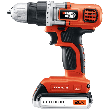One of the most annoying things that can possibly happen to a home owner is to come home from work one day only to find that the beautiful vinyl siding that you just had installed is now damaged. While you can always hire some one else to do the repair work for you, it is invariably pretty expensive to do so. Instead, why not try repairing vinyl siding yourself.
Repairing vinyl siding while a time consuming task, is one that can easily be done by even the most novice of do-it-yourselfers. Be prepared though to spend up to five hours working on this project. When doing this project it is a good idea to have someone help you, if for no other reason than to speed things up.
- Pop damaged panel. Use a siding tool to start popping the damaged panel from the wall. These tools can be purchased at any home improvement store. Simply slide the tool along the seam, using a little pressure to pull out on the panel, while also pulling down at the same time. Do not pull too hard, or you may cause unintended damage.
- Remove damaged section. Lift the panel above the damaged area to allow you to really remove the damaged section. Be careful that you lift the panel above the damaged section, but that you do not remove that section as well. The sections are flexible enough that you should be able to remove the nails holding the damaged section in place. If necessary, use a small prybar to help remove the nails.
- Get replacement panel. Take the now free damaged section of vinyl siding to your local home improvement store, and get a match. Siding needs to match exactly, otherwise be prepared to have an eyesore. If you cannot find a match at your local home improvement store, take it a local siding dealer to find a replacement piece.
- Insert new panel. Begin to install the new vinyl siding by working your way from the ground up. This basically means that you need to start with the lowest piece first, and then work upwards. Secure the pieces in place using the same kind of nails or other fasteners that were used previously. You may need to force the last panel into place using a prybar, but it can be done.
- Check to make sure seals are good. Check to make sure that there are no exposed bare walls or seams for the vinyl siding. If you have any exposed walls or seams, then you are running the risk of incurring water damage to the walls themselves. Pull lightly on the panels to make sure that they do not come off either. If they do, refasten the pieces in place and check again.
Author Bio
Lee Wyatt
Contributor of numerous Tips.Net articles, Lee Wyatt is quickly becoming a regular "Jack of all trades." He is currently an independent contractor specializing in writing and editing. Contact him today for all of your writing and editing needs! Click here to contact. Learn more about Lee...
Cleaning Silk Curtains
Silk curtains, just like any other silk object, can be a beautiful and elegant addition to the decor of any home. That ...
Discover More
Removing Deodorant and Antiperspirant Stains
If you happen to have a few white t-shirts, blouses, or button-up shirts, then chances are you know the pain of having to ...
Discover More
Simple Hardwood Floor Restoration
Simple hardwood floor restoration projects aren't all that difficult, though you will need to be careful. All you really ...
Discover More
More Home Improvement Tips
Exterior Lighting
The next time you have a summertime backyard party, consider hanging string lighting to enhance the festivities. Exterior ...
Discover More
Installing a Brick Pathway
It is never really too late nor too early to add a brick pathway to your home. Installing a brick pathway, while fairly ...
Discover More
Installing a Lamppost in Your Yard
Installing a lamppost in your yard can be a great idea for all kinds of reasons. While you can always hire someone to do ...
Discover More

Comments